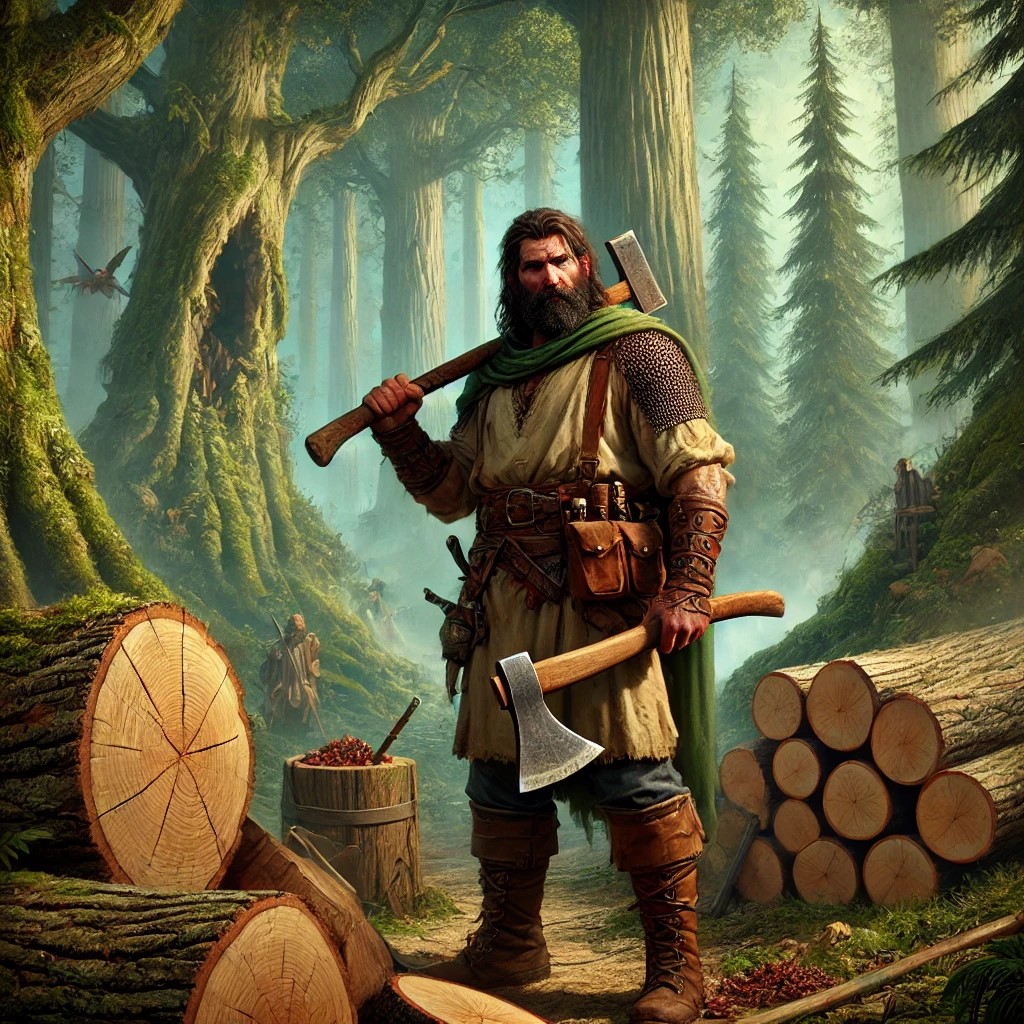Woodcutting (sage ability)
Woodcutting is an amateur-status sage ability in the studies of Trees and Forester, also known as "selective cutting." This is the practice of harvesting trees in a manner that maintains a healthy and sustainable forest ecosystem. This method promotes an uneven-aged or all-aged forest structure, allowing continuous regrowth while ensuring a steady supply of timber and firewood. By carefully selecting which trees to cut — typically those that are mature, diseased or poorly positioned — woodcutters improve forest resilience, encourage biodiversity and provide better habitats for wildlife.
The process involves identifying and harvesting individual trees whose canopies are not touching, creating small openings in the forest that allow younger trees to grow. A skilled woodcutter must walk the forest, assess tree quality and mark suitable trees for harvesting. Factoring in time for selection and cutting, a single woodcutter can fell, de-branch and prepare up to 1 cord of timber logs per day. However, if assisted by an untrained labourer, their output increases to 3 cords per day, as the labourer can handle the felling while the trained worker focuses on selecting and managing the process. Once cut, logs must be transported to a site for further processing.
Overall Production
Over the course of a year, an acre of forest can produce 32 cords of wood through sustainable harvesting. A cord of wood is equivalent to 85 cubic feet of firewood or 1,536 board feet of lumber. Processing this raw timber into usable materials requires additional labour. Converting 1 cord into firewood takes approximately 2 days of untrained labour, while cutting logs into planks requires specialised tools. Using a hand saw and saw pit, two workers (one trained, one untrained) can cut 96 board feet of lumber per day. More advanced methods, such as water- or wind-powered sawmills, significantly increase efficiency, processing up to 1,600 board feet per day.
Because of the weight and bulk of timber, transportation is a crucial part of woodcutting operations. Logs are often moved using rivers, streams or log flumes, which greatly reduce hauling costs. In other cases, horse-drawn carts, sleds or temporary logging roads are used to transport timber overland. By employing proper woodcutting techniques, carefully managing tree selection and utilising efficient transport and processing methods, woodcutters ensure a continuous supply of high-quality timber while maintaining the health and longevity of the forest.
Attributes of a Woodcutter
Woodcutters are subtly conscious of differences in bark texture, the way a tree's leaves shift in the wind and the scent of fresh sap that indicates health or decay. Their hands are calloused from years of labor, but their strokes are deliberate — whether wielding an axe, a saw or a drawknife, they waste no effort. They know the grain of the wood before they split it, anticipating how the fibers will part under their tools. Each notch, each branch trimmed, each log shaped for transport is done with a natural rhythm, an intuitive understanding of weight, balance and structure.
They do not fight against the tree but works with it. They know how to place their cuts so the tree falls as intended, how to read the land to decide where best to haul logs and how to pace themselves to avoid exhaustion. In time, their body learns to move in harmony with the work — breathing in sync with each strike, adjusting instinctively to the resistance of a blade biting into hardwood. To them, woodcutting is not just labour but an art, a balance of strength, precision and respect for the living world they shape with their hands.
See also,
Comrade (non-player character)
Plant Life (sage field)
Thorp
Wilderland (sage field)
